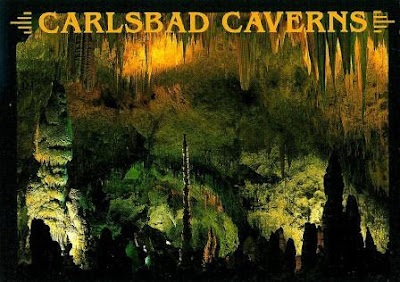Joanna sent me cards from 5 different countries and the card from the US is from a new Unesco site :D Carlsbad Caverns. The other cards are from Bergen, Norway; Wachau, Austria; Pannonhalma Abbey in Hungary and Lake Louise in the Canadian Rocky Mountains.
 Bergen, on the south-western coast of Norway, is the 2nd largest city in the country. Bergen's old quayside, Bryggen is on Unesco's WHS list since 1979.
Bergen, on the south-western coast of Norway, is the 2nd largest city in the country. Bergen's old quayside, Bryggen is on Unesco's WHS list since 1979. Bryggen is a series of Hanseatic commercial buildings lining the eastern side of the fjord coming into Bergen. The area of the present Bryggen constitutes Bergen's oldest part. Around 1360 a Kontor of the Hanseatic League was established there, and as the town developed into an important trading centre, the wharfs were improved. The buildings of Bryggen were gradually taken over by the Hanseatic merchants. The warehouses were filled with goods, particularly fish from northern Norway, and cereal from Europe.
Throughout history, Bergen has experienced many fires, since, traditionally, most houses were made from wood. This was also the case for Bryggen, and as of today, around a quarter dates back to the time after 1702, when the older wharfside warehouses and administrative buildings burned down. The rest predominantly consists of younger structures, although there are some stone cellars that date back to the 15th century. - in: wikipedia
 The Wachau is an Austrian valley with a landscape of high visibility formed by the Danube river. The Wachau was inscribed as "Wachau Cultural Landscape" in the Unesco's WHS list in 2000.On the card there's the Göttweig Abbey, the Steiner Tower in Kreams, the Göttweig Abbey again, Dürnstein and the Aggstein ruins.
The Wachau is an Austrian valley with a landscape of high visibility formed by the Danube river. The Wachau was inscribed as "Wachau Cultural Landscape" in the Unesco's WHS list in 2000.On the card there's the Göttweig Abbey, the Steiner Tower in Kreams, the Göttweig Abbey again, Dürnstein and the Aggstein ruins.
 The Benedictine Pannonhalma Archabbey is the most notable landmark in Pannonhalma and one of the oldest historical monuments in Hungary. It was founded as the first Hungarian Benedictine monastery in 996 by Prince Géza. (...)
The Benedictine Pannonhalma Archabbey is the most notable landmark in Pannonhalma and one of the oldest historical monuments in Hungary. It was founded as the first Hungarian Benedictine monastery in 996 by Prince Géza. (...)
In 1996, "the Millenary Benedictine Abbey of Pannonhalma and its Natural Environment" was elected among the World Heritage sites. - in: http://www.findagrave.com/cgi-bin/fg.cgi?page=cr&CRid=2388953
 Lake Louise is a lake in Alberta, Canada. The glacial lake is located in Banff National Park, 5 km (3.1 mi) from the hamlet of Lake Louise and the Trans-Canada Highway.
Lake Louise is a lake in Alberta, Canada. The glacial lake is located in Banff National Park, 5 km (3.1 mi) from the hamlet of Lake Louise and the Trans-Canada Highway.Lake Louise is named after the Princess Louise Caroline Alberta (1848–1939), the fourth daughter of Queen Victoria and the wife of the Marquess of Lorne, who was the Governor General of Canada from 1878 to 1883.
The emerald colour of the water comes from rock flour carried into the lake by melt-water from the glaciers that overlook the lake. The lake has a surface of 0.8 km2 (0.31 sq mi) and is drained through the 3 km long Louise Creek into the Bow River.
Fairmont's Chateau Lake Louise, one of Canada's grand railway hotels, is located on Lake Louise's eastern shore. It is a luxury resort hotel built in the early decades of the 20th century by the Canadian Pacific Railway. - in: wikipedia
 Carlsbad Caverns' karst landscape, in the state of New Mexico, comprises over 80 recognized caves. They are outstanding not only for their size but also for the profusion, diversity and beauty of their mineral formations.
Carlsbad Caverns' karst landscape, in the state of New Mexico, comprises over 80 recognized caves. They are outstanding not only for their size but also for the profusion, diversity and beauty of their mineral formations.
Carlsbad Caverns includes a large cave chamber, the Big Room, a natural limestone chamber which is almost 4,000 feet (1,220 m) long, 625 feet (191 m) wide, and 350 feet (110 m) high at the highest point. It is the third largest chamber in North America and the seventh largest in the world.
No comments:
Post a Comment